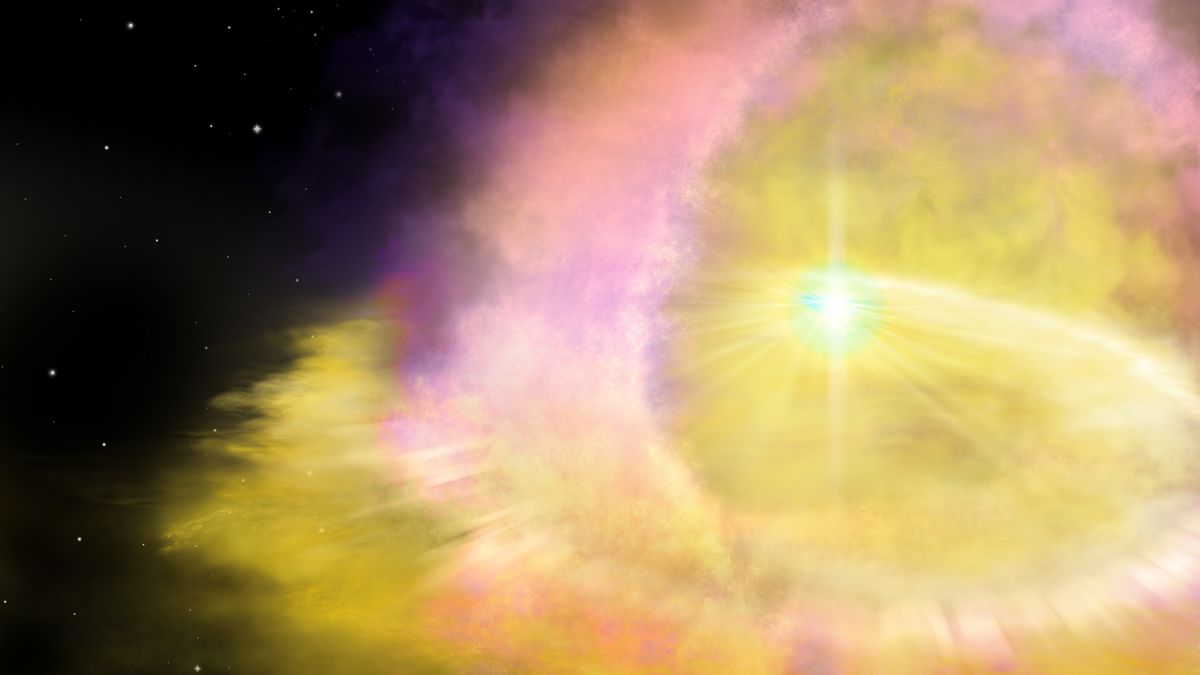JAKARTA - Researchers have been amazed by the recent supernova star explosion that occurred in space. As a result, this star explosion emits the brightest light ever in the galaxy in the last 1,000 days.
The Supernova explosion, named SN2016aps, occurred due to the collision of two super large stars. This supernova event is located at one point of the galaxy which is about 3.6 billion light years from Earth.
"Very massive stars like this were probably more common in the very early universe. We might be able to use this data to peek into the past to see the explosion of the first few stars," said first author of the study Matt Nicholl as quoted by Gizmodo, Wednesday 15 April.
The star explosion was found by a team of researchers from Harvard University, Northwestern University, Ohio University and the University of Birmingham in England. Through the Panoramic Survey Telescope and Rapid Response System, found a spark of light or flash that occurred on February 22, 2016.
Since then, scientists have investigated a series of stellar explosions for two consecutive years. Astronomers believe the SN2016aps supernova event has a mass of light bursts 500 times larger than the size of a typical star. They categorize SN2016aps in Hypernova.
"SN2016aps is spectacular in several ways. Not only is it brighter than any other supernova we've ever seen, but it has several properties and features that make it rare compared to other stellar explosions in the universe," said astronomer Edo Berger of Harvard University.
According to astronomers' records, the kinetic energy generated from the SN2016aps explosion reached 5x10 52 erg, or the equivalent of the SN1998bw hypernova incident a few years ago. Even the cosmic light emitted by SN2016aps is 40 times brighter than SN1998bw which is 1x10 43 at peak luminosity.
"The intense energy output from this supernova points to a very massive ancestor star. At birth, this star is at least 100 times the mass of our sun," said Berger.
Astronomers believe that this colossal explosion in the galaxy did not come from just one dead star. The SN2016aps explosion actually created two lobes and a disk of debris that rotated around the star's core.
The researchers also found a massive surge in hydrogen gas when the two stars collided. Prior to this discovery, the idea that two stars could combine and give supernova powers such as what astronauts called "pulsational pair instability" was thought to be theoretical only.
"SN2016aps held onto its hydrogen prompted us to theorize that two less massive stars had joined together, because a low-mass star would hold on to hydrogen much longer," Berger conjectured.
Pulsational pair instability occurs when the nucleus of a massive star gets very hot and releases an electron-positron pair, before finally the radiation pressure causes the star's core to collapse. In this process, the resulting explosive power exceeds a nuclear explosion.
"But now that SN2016aps has been identified, we will be able to look for more of that. And it can also help us characterize this extraordinary explosion. The identification of SN2016aps has paved the way for identifying similar events from the first generation of stars," explained Berger.
At this point in time, researchers have seen this happen some 10 billion years after the Big Bang. Berger added that using the upcoming Large Synoptic Survey Telescope, astronomers could find other evidence of such an explosion from the first billion years in the later history of the universe.
The English, Chinese, Japanese, Arabic, and French versions are automatically generated by the AI. So there may still be inaccuracies in translating, please always see Indonesian as our main language. (system supported by DigitalSiber.id)













